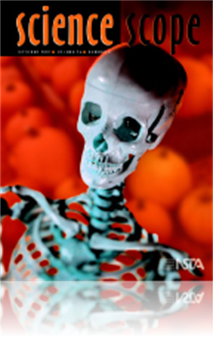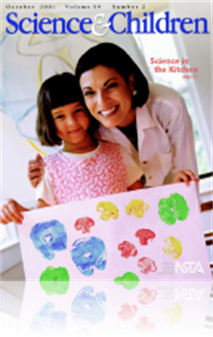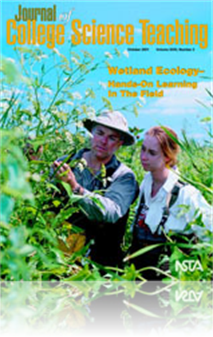All Resources
Journal Article
Using toys to teach basic physical science concepts is a great way to engage students through hands-on experience with familiar objects. This article contains several activities that use toys to help students investigate average speed, acceleration, ...
Journal Article
Centimeters, Millimeters, and Monsters
The activity described in this article reinforces metric skills as preservice teachers design monster clothes for an imaginary monster wedding. The humorous activity also demonstrates how the process skills of estimation and linear measurement can be...
Journal Article
Someone’s in the Kitchen with Science
The kitchen is a natural source of science exploration and a great place for young children to develop and practice their science process skills. These easy-to-do activities require few materials, address the National Science Education Standards, int...
Journal Article
Research and Teaching: Student Understanding of Ionizing Radiation and Radioactivity
Results from research into the teaching and learning of physics have shown that many college students have significant conceptual and reasoning difficulties relating to topics of radioactivity. Interviewing students from three different science backg...
Journal Article
Science and Children’s editor shares thoughts regarding the current issue, asking you to note how important "communication" is among the participants in the featured exciting elementary science activities....
Journal Article
Textbook Alignment: Aligning the curriculum with benchmarks and standards
Why is alignment so important? What difference does it make if textbooks include activities that are not aligned? The Benchmarks for Science Literacy and the National Science Education Standards include in their science literacy recommendations a num...
Journal Article
Commentary: Science the Write Way
An opinion piece about the rapid advances in science and the challenges it represents for classroom teachers....
Journal Article
Commentary: Science and Service Learning
An opinion piece about a successful service learning project in which students used research on plant types to bring a lively activity to local nursing home residents....
Journal Article
As an extra credit activity, teachers can let students take turns teaching class using the “each one teach one” approach. Student groups select an activity, write a lesson plan and worksheet, and present their adapted activity to their classmates...
Journal Article
Scope on the Skies: I'm on top of the world
This column focuses on astronomy throughout the year. In this month’s issue find out if there's actually a top or a bottom to the Earth?...
Journal Article
How Do Children Know What They Know?
New teachers often enter the classroom with a general knowledge of what they can expect in a particular age group of children, but they quickly discover, usually by trial and error, precisely what their students actually know and can do. In the follo...
Journal Article
Don't Settle for Imitation Laboratory Assignments
Science courses often offer structured laboratory exercises that do not provide students with a thorough understanding of how to conduct scientific research. Westfield State College’s Animal Behavior course requires students to design their own res...
Journal Article
Personalizing the Goals of Undergraduate Research
Research experiences are becoming increasingly available for undergraduate science students. Although many undergraduate research programs are designed with assessment-friendly outcomes as stated goals, a more personalized approach in goal setting ca...
Journal Article
Individual teacher membership and use of the National Science Education Standards are vital to attaining the goal of an inquiry science experience for all students. Membership in professional organizations and NSES use are linked with desirable class...






